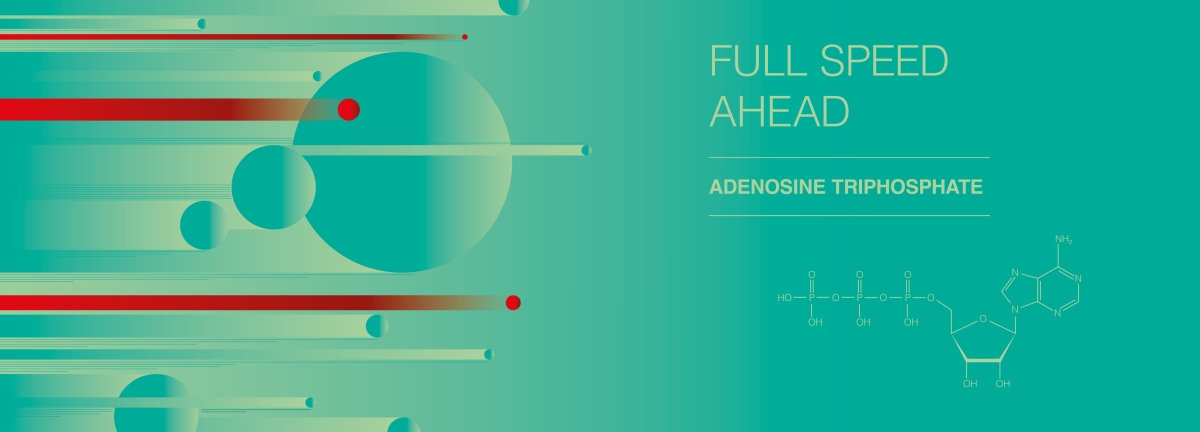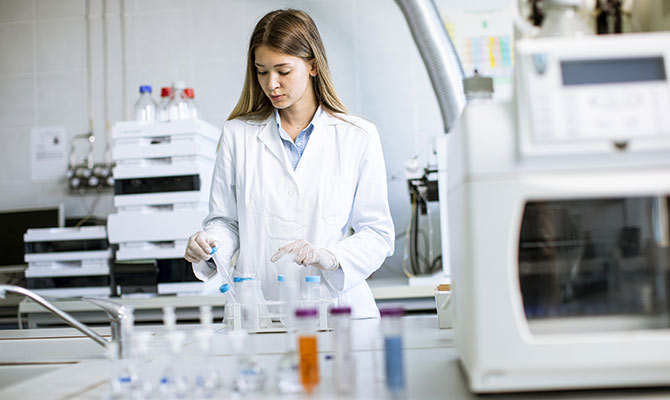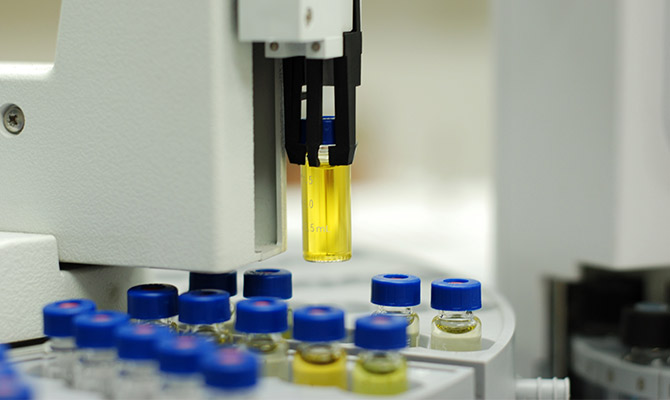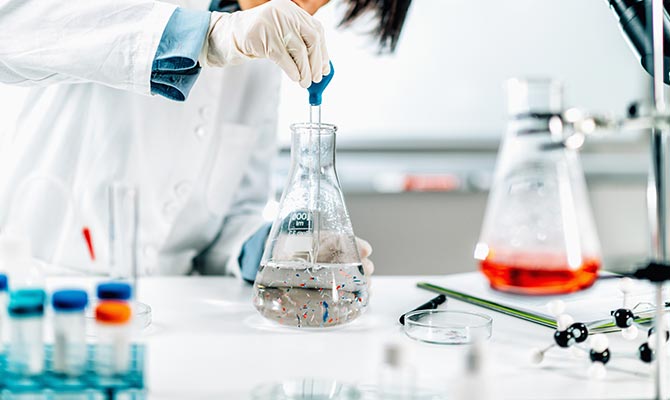
Full speed ahead
with our intelligent energy booster ATP
Adenosine triphosphate is a complex organic compound with a unique structure that serves as a universal energy carrier – giving us the energy we need, exactly when we need it. ATP is able to both store energy and release it when needed. As the primary energy source for our cells, it provides the power for many functions, such as cellular metabolism, production of specialized molecules and cell growth. It may be a complex formula – but it’s one that’s definitely worth breaking down into more detail.
One energy formula – three important components
Adenosine triphosphate (ATP) is a complex organic compound with a unique structure that allows it to serve as a universal energy carrier in living organisms. As the saying goes, all good things come in threes – and that’s certainly true of ATP. ATP is a mononucleotide of adenine with three phosphate groups, each of which is linked to each other via an anhydride bond to form a chain. Furthermore, ATP consists of three types of molecules: The base adenine, as well as the small phosphate chain, is bound to a ribose, a 5-cornered sugar ring molecule. However, the aforementioned bond between the phosphates is the real secret weapon behind ATP. If an energy-consuming process needs to be carried out in the cell – for example, if two molecules are to be joined together – then the third phosphate in ATP is separated, i.e. the bond is broken. The released energy is then fed directly into the desired process (in this case, the new molecular bond). Relatively speaking, though, there’s not much energy at play here – we’re talking about 126.8 kJ of energy per kg of ATP, which is barely anything compared to the calorific value of gasoline (approx. 43,000 kJ per kg) or hydrogen (approx. 120,000 kJ per kg).
It all comes down to the mass
Even the body’s own sugar, glucose, has a relatively much larger calorific value of 15,690 kJ per kg. So why doesn’t the body use glucose as an energy carrier? Quite simply: Because it would be too much all at once. Glucose is great for storing energy, but when it’s broken down, the amount of energy released as a result would overwhelm many of the body’s processes. It’s the same reasoning behind why you wouldn’t charge a smartphone from a truck battery, for example.
Instead, the cells adopt a very systematic approach to energy management, ensuring that all energy that is released at any point is stored in small chunks as ATP. Most of this is produced from glucose in the mitochondria, the “power plants” of a cell.
The ATP molecule is incredibly small, can be transported anywhere and can find its way into all cells. ATP is naturally present in incredibly large quantities in the body – and as long as there’s some form of “fuel” available (usually glucose), the cells can easily produce more of it themselves when needed. What’s more, ATP provides exactly the right amount of energy for a single step in the construction of a single molecule. So, from a “mass” point of view, it’s a super energy storage device – and from a more “singular” point of view, it’s also an optimal energy transmitter for processes in the cells.
A new discovery – made in Germany
Whenever a significant discovery is made in Germany, we’re all naturally more than a little bit proud. And the discovery of adenosine triphosphate in 1929 by the German biochemist Karl Lohmann is one such source of national pride. Lohmann developed methods for isolating ATP and determining the ATP content of biological tissue. His name lives on in the “Lohmann reaction”, which describes the reversible phosphate transfer from creatine phosphate to adenosine diphosphate (ADP) by creatine kinase to form ATP. And Karl Lohmann’s legacy lives on in other respects, too – not least the numerous prizes and awards he received for the scientific work he carried out throughout his life.
Summer’s round the corner – time to hit the gym!
Now we know that we’ve got these super molecules taking care of our energy management, we’ve got some fresh motivation for our workouts as we head into the summer. But although ATP may sound like an inexhaustible source of energy with unlimited access, it’s actually more of a short-lived pleasure. This is because each individual ATP molecule is not just a weak energy store, but also a short-term one, with the energy consumed in a mere few seconds during demanding processes. The stored energy is depleted most quickly during muscle contractions, for which the reserves are actually exhausted within two or three seconds. This is why this form of own energy production by the body works better as a quick boost and for short sprints, rather than long marathons. However, an extremely large amount of ATP is also consumed in our brain, since thinking is an enormously energy-consuming process.
Food is the best energy source
Since we’re constantly using energy, our energy stores need to be continually replenished – with sufficient time for regeneration between stressful situations and performance peaks. Of course, we naturally need to supply our bodies with energy anyway.
So how important is proper nutrition for replenishing our energy stores, you might ask? Well, it’s pretty important for sure. Regular meals are particularly necessary for ensuring a consistent supply and optimal performance, since our body continually converts carbohydrates, proteins and fats into ATP. When it comes to any form of energy intake, the best sources of energy are those that are of high quality and sustainable – and it’s no different for our body, either. In this case, the equivalent would be a nutritious diet consisting of long-chain carbohydrates and high-quality fats and oils.
And on the subject of energy, we’ve got no shortage of it at Carl Roth – and plenty to pass on to you, too, as we help you move forward every day with our service, advice and new products.
Sources:
https://flexikon.doccheck.com/de/Adenosintriphosphat
https://www.chemie.de/lexikon/Adenosintriphosphat.html
https://www.brain-effect.com/magazin/atp-adenosintriphosphat





